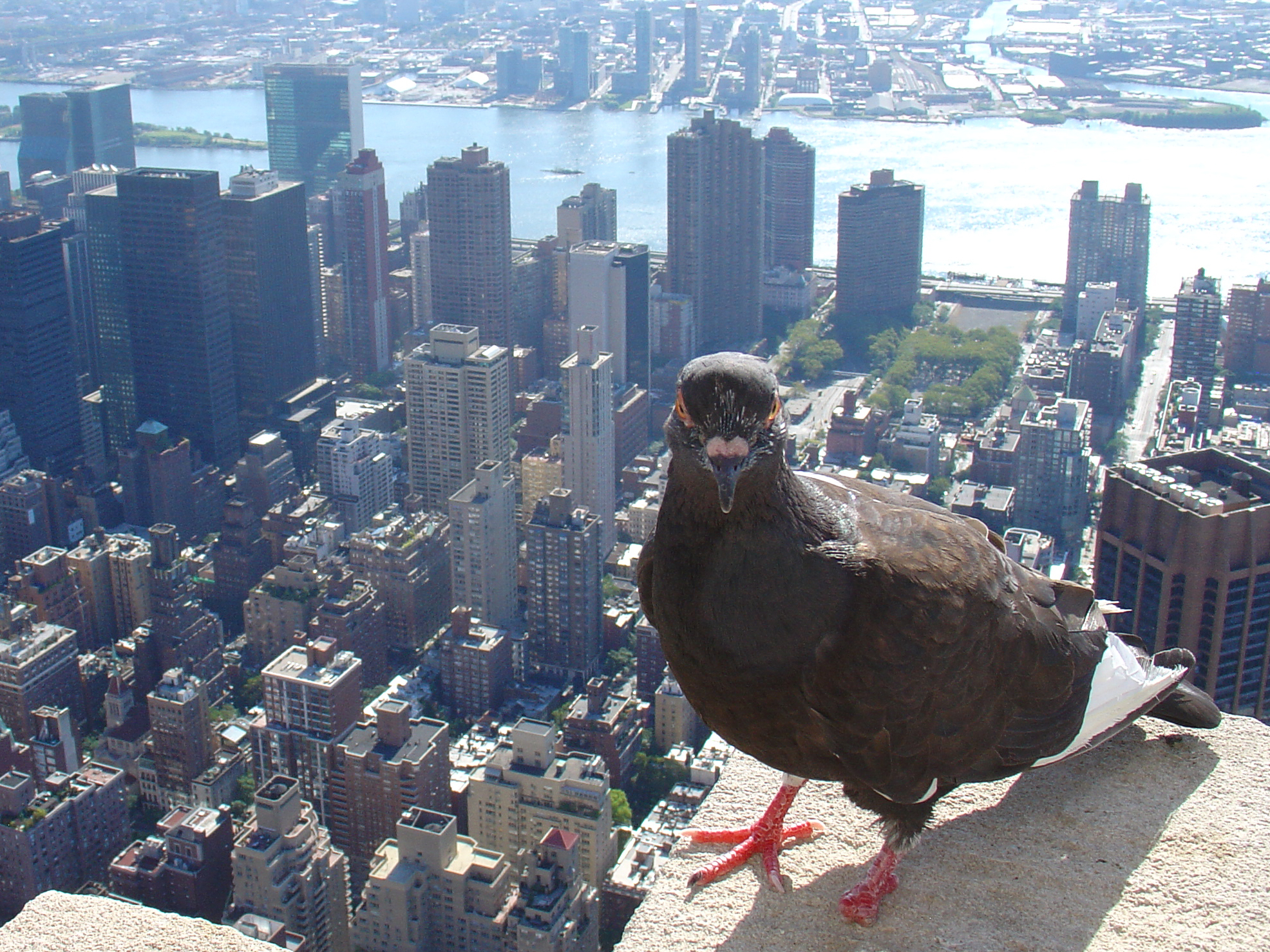https://www.youtube.com/watch?v=pU4JTPrENnA
Introduction: Respiration in Birds and Humans

Respiration is the vital process through which organisms exchange gases with their environment. It is essential for the survival of all living beings, including birds and humans. However, birds and humans possess distinct respiratory systems adapted to their unique needs and lifestyles.
Humans have a mammalian respiratory system characterized by lungs, a diaphragm, and a complex network of airways. On the other hand, birds have a highly efficient respiratory system, particularly suited for activities like flight. These differences in structure and function set the stage for exploring the fascinating variations in respiration between birds and humans.
Anatomy of Bird and Human Respiratory Systems

Birds and humans exhibit significant differences in the structure and function of their respiratory systems. Understanding their anatomy provides insights into how respiration varies between the two.
Bird Respiratory System
Birds possess a highly efficient respiratory system tailored to meet the demands of their high metabolic rate and active lifestyle. Unlike humans, birds lack a diaphragm and have rigid lungs firmly attached to the thoracic wall. Their respiratory system comprises air sacs and tubes that enable a unidirectional airflow through the lungs.
Air enters through the nostrils, travels into the trachea, and bifurcates into bronchi leading to the lungs. Within the lungs, bronchi divide into smaller parabronchi where gas exchange occurs. Oxygen diffuses into the bloodstream through air capillaries while carbon dioxide is released.
This specialized system optimizes gas exchange, allowing birds to meet the demands of their high-energy activities.
Air Intake and Expulsion

Bird Respiration
Birds have a unique respiratory system that efficiently extracts oxygen from the air. Air enters through the nostrils, passes through nasal passages, and reaches the posterior air sacs. During inhalation, the air sacs expand, filling with fresh air. During exhalation, the air sacs contract, pushing air into the lungs. Air flows through the lungs in a unidirectional manner, passing through parabronchi where oxygen diffuses into surrounding capillaries while carbon dioxide is expelled.
Human Respiration
Humans have a respiratory system consisting of the nose, mouth, trachea, bronchi, and lungs. Air enters through the nose or mouth, passes through the pharynx and larynx, and enters the trachea. The trachea branches into bronchi, which further divide into bronchioles. Gas exchange occurs in tiny air sacs called alveoli, where oxygen is taken up by capillaries while carbon dioxide is released for exhalation.
In summary, birds utilize air sacs and unidirectional airflow for efficient oxygen extraction, while humans rely on sequential passage through airways for gas exchange. Understanding these differences in respiration mechanisms provides insights into the remarkable adaptations of avian and human respiratory systems.
The Role of Lungs and Airways

Birds have a unique respiratory system that differs significantly from human respiration. Avian respiration involves a complex network of air sacs, lungs, and specialized airways that facilitate efficient gas exchange and support the high metabolic demands of birds.
Unlike humans, who have four air sacs, birds possess a system of nine air sacs. These air sacs play a crucial role in maintaining a unidirectional flow of air through the respiratory system. Acting as reservoirs, they allow for continuous airflow, ensuring a constant supply of oxygen during both inhalation and exhalation.
Air enters the respiratory system through the trachea or windpipe, similar to humans. However, the avian trachea splits into two primary bronchi, which further divide into smaller bronchi that lead to the lungs. These bronchi in birds contain small tubes called parabronchi, responsible for gas exchange.
Parabronchi are arranged in a crisscross pattern, maximizing the surface area available for efficient gas exchange. As the oxygen-rich air moves across the blood vessels in the parabronchi, oxygen is taken up by the bloodstream, and carbon dioxide is released for exhalation.
Unlike the flexible lungs of humans that expand and contract during respiration, birds have rigid lungs with a fixed volume. This unique lung structure allows for a continuous flow of air and efficient gas exchange.
In summary, the lungs and airways in birds play a vital role in facilitating efficient gas exchange. The complex system of air sacs, bronchi, and parabronchi ensures a unidirectional flow of air, maximizing oxygen uptake and supporting the high metabolic demands of avian species. Understanding these differences between bird and human respiration sheds light on the remarkable adaptations that allow birds to thrive in their diverse environments.
Differences in the Respiratory Process Between Birds and Humans

Birds and humans have distinct respiratory processes that are adapted to their respective physiology and lifestyles. These differences contribute to variations in their breathing mechanisms and gas exchange efficiency.
Breathing Mechanism
Birds and humans employ different breathing mechanisms. Birds have a unique unidirectional airflow system, while humans rely on a tidal breathing mechanism.
Birds
Birds possess a highly efficient breathing mechanism. During inhalation, air enters through their nostrils, travels down the trachea, and fills the posterior air sacs. From there, during exhalation, the air passes through the lungs and into the anterior air sacs. This unidirectional flow ensures a continuous supply of oxygen-rich air to the lungs, enhancing gas exchange efficiency. Fresh air from the anterior air sacs enters the lungs during subsequent inhalation, while the used air is expelled from the body.
Humans
In contrast, humans utilize a tidal breathing mechanism. During inhalation, the diaphragm contracts, causing the chest cavity to expand. This expansion creates a pressure gradient, drawing air through the nose or mouth into the trachea, and ultimately filling the lungs. Upon exhalation, the diaphragm relaxes, and the chest cavity contracts, expelling air from the lungs. The same pathway is used for both inhalation and exhalation in humans.
Gas Exchange
Gas exchange, the transfer of oxygen and carbon dioxide between the respiratory system and the bloodstream, also differs between birds and humans.
Birds
Birds possess efficient gas exchange capabilities due to their unique respiratory system. Oxygen-rich air from the posterior air sacs passes through the lungs, where it comes into contact with the thin-walled, highly vascularized air capillaries. This close proximity enables efficient diffusion of oxygen into the bloodstream and facilitates the removal of carbon dioxide. The continuous unidirectional airflow system in birds ensures a constant supply of oxygen for sustained energy production.
Humans
Humans rely on the alveoli within their lungs for gas exchange. The alveoli are tiny air sacs surrounded by a network of capillaries. When oxygen enters the alveoli during inhalation, it diffuses across the alveolar walls and into the bloodstream. Simultaneously, carbon dioxide passes from the bloodstream into the alveoli, ready to be expelled during exhalation. This bidirectional gas exchange in humans is sufficient for their terrestrial lifestyle but is less efficient compared to the unidirectional airflow system in birds.
In the subsequent sections, we will explore additional aspects of bird and human respiration, such as the impact of altitude on respiration and the effects of pollutants on both species. By understanding these differences, we can gain a deeper appreciation for the unique adaptations that birds and humans have developed to meet their respiratory needs.
How Altitude Affects Respiration in Birds and Humans
![]()
Altitude has distinct effects on respiration in birds and humans. While humans face challenges due to reduced oxygen availability, birds have evolved a unique respiratory system that enables them to thrive in high-altitude environments.
Bird Adaptations to High Altitude Respiration
Birds possess a remarkable respiratory system optimized for oxygen uptake at high altitudes. Unlike humans, who rely on a diaphragm for breathing, birds employ a more intricate mechanism involving both their lungs and air sacs. These air sacs, a total of nine, serve as reservoirs for air and facilitate efficient oxygen extraction even in thin air.
Unidirectional Airflow and Efficient Oxygen Extraction

Birds have a unidirectional flow of oxygen-rich air through their respiratory system, thanks to the presence of air sacs. This unique arrangement maximizes oxygen uptake, allowing birds to inhale larger volumes of air at high altitudes. The air is rapidly circulated through the air sacs, ensuring efficient oxygen extraction.
Enhanced Oxygen-Carrying Capacity
Birds have a higher concentration of red blood cells, enhancing their oxygen-carrying capacity. This adaptation enables them to cope with reduced oxygen levels at high altitudes. The increased number of red blood cells facilitates the efficient transport of oxygen from the lungs to the body’s tissues, ensuring birds receive adequate oxygen for their metabolic needs.
Human Challenges with High Altitude Respiration
![]()
In contrast to birds, humans face difficulties with respiration at high altitudes due to decreased oxygen pressure. As altitude increases, the partial pressure of oxygen diminishes, resulting in reduced oxygen availability for the body.
The Body’s Response to Reduced Oxygen Levels

To compensate for lower oxygen levels, humans instinctively respond by breathing faster and deeper. This physiological response aims to increase the intake of oxygen. Chemoreceptors in the body detect the decrease in oxygen levels and trigger an increased respiratory rate, allowing humans to acquire more oxygen per minute.
Acclimatization and Adaptation
![]()
With prolonged exposure to high altitudes, humans can acclimatize and adapt to the challenges posed by reduced oxygen availability. The body gradually adjusts to enhance oxygen utilization, such as increasing the production of red blood cells and improving the efficiency of oxygen uptake by tissues. These adaptations help individuals better cope with the effects of altitude on respiration, enabling them to function more effectively in high-altitude environments.
Understanding the contrasting responses to altitude between birds and humans sheds light on the remarkable adaptations of avian respiratory systems. While birds have evolved specialized mechanisms to thrive in high-altitude habitats, humans rely on acclimatization and physiological adjustments to overcome the challenges associated with decreased oxygen levels. By studying these adaptations, scientists gain valuable insights into the diverse strategies employed by different species to optimize respiration in varying environmental conditions.
The Impact of Pollutants on Bird and Human Respiration
![]()
Air pollution poses significant threats to both bird and human respiratory systems. While birds have a highly efficient respiratory system, they are particularly vulnerable to the adverse effects of pollutants. Humans, on the other hand, may experience less severe impacts due to their less efficient respiratory system. Here are some key points to consider when discussing the impact of pollutants on bird and human respiration:
Impact of Pollutants on Birds
![]()
Birds’ efficient respiratory system makes them highly sensitive to air pollution. Pollutant exposure has the following consequences on avian respiration:
-
Respiratory Tissue Damage: Pollutants like particulate matter, gases (e.g., ozone, sulfur dioxide), and heavy metals directly harm bird respiratory tissues, leading to respiratory distress and impaired lung function.
-
Reduced Oxygen Uptake: Pollutants hinder birds’ ability to efficiently extract oxygen, negatively impacting their health and performance, particularly during strenuous activities like flight.
-
Impaired Respiratory Defense Mechanisms: Pollutants compromise birds’ respiratory defense mechanisms, making them more susceptible to respiratory infections and diseases.
Impact of Pollutants on Humans
While humans have a less efficient respiratory system compared to birds, exposure to pollutants can still have detrimental effects. The impact of pollutants on human respiration includes:
-
Respiratory Symptoms: Prolonged exposure to air pollutants can cause respiratory symptoms such as coughing, wheezing, shortness of breath, and chest tightness.
-
Exacerbation of Respiratory Conditions: Individuals with pre-existing respiratory conditions like asthma, chronic obstructive pulmonary disease (COPD), or allergies are particularly vulnerable to the exacerbation of their symptoms when exposed to pollutants.
-
Increased Risk of Respiratory Infections: Air pollution weakens the respiratory system’s defense mechanisms, making humans more susceptible to respiratory infections like bronchitis and pneumonia.
-
Long-Term Effects: Chronic exposure to pollutants can lead to long-term respiratory issues, including reduced lung function, the development of respiratory diseases, and an increased risk of lung cancer.
In conclusion, both bird and human respiratory systems are adversely affected by air pollution. Birds, with their highly efficient respiratory system, are more vulnerable to pollutant-induced damage and compromised respiratory function. Humans may experience respiratory symptoms, exacerbation of existing conditions, increased risk of infections, and long-term respiratory issues due to pollutant exposure. Understanding these impacts is crucial for developing effective strategies to mitigate air pollution and protect respiratory health in both birds and humans.
Conclusion: Unique Respiratory Adaptations in Birds and Humans

The respiratory systems of birds and humans differ significantly due to the evolutionary adaptations required for flight in birds. These adaptations enable birds to meet the high metabolic demands associated with aerial locomotion.
Birds possess a specialized respiratory system that incorporates air sacs in addition to lungs. These air sacs serve as storage areas for air, facilitating a continuous flow of oxygen during both inhalation and exhalation. This intricate system ensures a constant supply of oxygen, supporting sustained flight and endurance during long journeys.
Moreover, birds exhibit a higher efficiency of gas exchange compared to humans. Their lungs have a larger surface area and numerous tiny air capillaries, enhancing oxygen uptake. This allows birds to extract more oxygen from each breath, supporting their elevated metabolic rates and enabling them to thrive in challenging environments.
The respiratory rates of birds are also higher than those of humans, ensuring a continuous delivery of oxygen to their muscles during strenuous activities. This heightened respiratory rate is crucial for meeting the oxygen demands essential for flight and physically demanding behaviors.
Additionally, birds employ a remarkable unidirectional airflow system, allowing them to breathe both during inhalation and exhalation. This unique mechanism ensures a constant supply of fresh, oxygen-rich air, optimizing gas exchange efficiency and maintaining high oxygen levels throughout the respiratory process. In contrast, humans possess a bidirectional airflow system.
Understanding the distinctions between bird and human respiration provides insights into the incredible adaptations of avian species and contributes to our knowledge of the limitations and potentials of human respiration. By studying the efficiency and mechanisms of bird respiration, researchers can gain inspiration for developing innovative approaches to enhance human respiratory function and address respiratory disorders.
The contrasting respiratory systems of birds and humans highlight the remarkable adaptations and evolutionary diversity found in the animal kingdom. Through further exploration and research, we can continue to uncover the intricacies of respiration in both birds and humans, deepening our understanding of the fascinating world of respiratory physiology.
Frequently Asked Questions
What are the main differences between bird respiration and human respiration?
![]()
Bird respiration differs from human respiration in several key aspects. Birds have a more efficient respiratory system that involves the use of air sacs and unidirectional airflow, whereas humans rely on tidal breathing. Birds have rigid lungs and a complex network of air sacs, while humans have flexible lungs and a diaphragm. Birds also have a higher respiratory rate and a unique system of parabronchi for gas exchange.
How does the breathing mechanism in birds differ from humans?
Birds have a unique breathing mechanism characterized by unidirectional airflow. During inhalation, air enters through the nostrils, travels down the trachea, and fills the posterior air sacs. During exhalation, the air passes through the lungs and into the anterior air sacs. This unidirectional flow ensures a continuous supply of oxygen-rich air to the lungs. In contrast, humans utilize tidal breathing, where air is drawn into the lungs during inhalation and expelled during exhalation through the same pathway.
How does gas exchange differ between birds and humans?
Gas exchange differs between birds and humans due to variations in their respiratory systems. Birds have a more efficient gas exchange process. Oxygen-rich air from the posterior air sacs passes through the lungs, where it comes into contact with thin-walled air capillaries. Oxygen diffuses into the bloodstream while carbon dioxide is released for exhalation. Humans rely on the alveoli within their lungs for gas exchange. Oxygen enters the alveoli, diffuses into the bloodstream, and carbon dioxide passes from the bloodstream into the alveoli for exhalation.
How does altitude affect respiration in birds and humans?
Altitude affects respiration differently in birds and humans. Birds have evolved adaptations to thrive in high-altitude environments. Their specialized respiratory system, including air sacs and enhanced oxygen-carrying capacity, enables efficient oxygen extraction. In contrast,

Leave a Reply